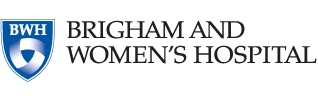Ferumoxytol as a Contrast Agent for Pulmonary Magnetic Resonance Angiography
| Status: | Enrolling by invitation |
|---|---|
| Conditions: | Cardiology, Cardiology |
| Therapuetic Areas: | Cardiology / Vascular Diseases |
| Healthy: | No |
| Age Range: | 18 - 85 |
| Updated: | 1/25/2019 |
| Start Date: | January 20, 2019 |
| End Date: | May 31, 2021 |
This proposal is based on findings from our previous work involving ferumoxytol-enhanced
cardiac magnetic resonance angiography. The resolution of the pulmonary vasculature based on
our previous imaging protocol was exceptional (PMID: 26786296). In the Partners Healthcare
System between January 1, 2014 and January 1, 2015 there were 541 patients evaluated in
Partners Healthcare-affiliated hospitals with a diagnosis of pulmonary embolism and acute or
chronic kidney disease at the same visit between 01/01/2014 and 01/01/2015. Ventilation
perfusion scanning was performed in 201 patients during this same time interval. Up to 63% of
these patients in one year did not receive the diagnostic test of choice.
cardiac magnetic resonance angiography. The resolution of the pulmonary vasculature based on
our previous imaging protocol was exceptional (PMID: 26786296). In the Partners Healthcare
System between January 1, 2014 and January 1, 2015 there were 541 patients evaluated in
Partners Healthcare-affiliated hospitals with a diagnosis of pulmonary embolism and acute or
chronic kidney disease at the same visit between 01/01/2014 and 01/01/2015. Ventilation
perfusion scanning was performed in 201 patients during this same time interval. Up to 63% of
these patients in one year did not receive the diagnostic test of choice.
Thromboembolic events in patients with chronic kidney disease are out of proportion to age
matched controls occurring 2.34 times more frequently than in non-CKD patients (PMID
19561505). At the same time, patients with kidney disease are not offered the gold standard
for pulmonary embolus diagnosis, i.e. CT angiography, for concern of acute dialysis to treat
contrast-induced nephropathy. Ventilation perfusion scintigraphy (V/Q) is the preferred
diagnostic test for patients with advanced CKD (glomerular filtration rate <30mL/min/m2) and
suspicion of pulmonary embolus, but can not be utilized if pulmonary parenchyma contains
interstitial edema or alveolar occlusion due to pneumonia. If diagnostic tools for pulmonary
embolus are not available, patients are subject to the risk of empiric treatment to avoid
life-threatening complications of untreated pulmonary embolus. For those patients with CKD
that undergo CT angiography, they are placed at risk of initiating dialysis. If this occurs
multiple financial costs are associated with dialysis catheter placement and acute
hemodialysis. If a patient instead is evaluated with gadolinium-based contrast modalities,
there is the risk of nephrogenic systemic fibrosis and the morbidity associated with this
iatrogenic disease process.
Ferumoxytol-enhanced MRI could avoid the risk of iodinated contrast and gadolinium contrast
and accelerate the diagnosis and treatment of patients with pulmonary embolus.
matched controls occurring 2.34 times more frequently than in non-CKD patients (PMID
19561505). At the same time, patients with kidney disease are not offered the gold standard
for pulmonary embolus diagnosis, i.e. CT angiography, for concern of acute dialysis to treat
contrast-induced nephropathy. Ventilation perfusion scintigraphy (V/Q) is the preferred
diagnostic test for patients with advanced CKD (glomerular filtration rate <30mL/min/m2) and
suspicion of pulmonary embolus, but can not be utilized if pulmonary parenchyma contains
interstitial edema or alveolar occlusion due to pneumonia. If diagnostic tools for pulmonary
embolus are not available, patients are subject to the risk of empiric treatment to avoid
life-threatening complications of untreated pulmonary embolus. For those patients with CKD
that undergo CT angiography, they are placed at risk of initiating dialysis. If this occurs
multiple financial costs are associated with dialysis catheter placement and acute
hemodialysis. If a patient instead is evaluated with gadolinium-based contrast modalities,
there is the risk of nephrogenic systemic fibrosis and the morbidity associated with this
iatrogenic disease process.
Ferumoxytol-enhanced MRI could avoid the risk of iodinated contrast and gadolinium contrast
and accelerate the diagnosis and treatment of patients with pulmonary embolus.
Inclusion Criteria:
- Patients with a clinical suspicion for pulmonary embolus
- estimated glomerular filtration rate (eGFR) <30mL/min/1.73m2
- have been clinically disqualified from the use of iodine-based contrast studies,
gadolinium-based contrast studies or nuclear-based detection studies
Exclusion Criteria:
- received ferumoxytol in the previous six months
- anaphylactic reaction to other intravenous iron formulations
- calculated estimated glomerular filtration rate is >50mL/min/1.78m2
- patients on dialysis with no residual renal function
- pregnant women and nursing mothers. Standard screening will be used by
- patients >65 years of age with BMI >45, and/or liver disease (Child-Pugh class C)
We found this trial at
1
site
Brigham and Women's Hosp Boston’s Brigham and Women’s Hospital (BWH) is an international leader in...
Click here to add this to my saved trials
